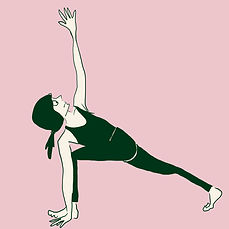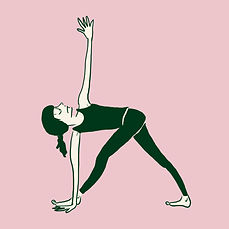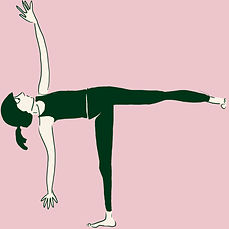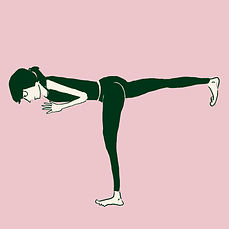top of page
Revolved Half Moon
1
Highlights
Balance and Stability: Revolved Half Moon Pose challenges your balance and stability, requiring strength and concentration. Regular practice can improve proprioception (body awareness) and enhance overall balance.
Spinal Rotation and Mobility: This pose involves a deep spinal twist, which helps improve spinal flexibility and mobility as well as opening the shoulders and chest, promoting better posture and expanding the chest cavity for improved breathing.
Core Strength: The pose engages the core muscles, including the abdominal and oblique muscles, to maintain balance and stability. It strengthens the core and contributes to a stronger, more stable midsection.
Hip Opening: Revolved Half Moon Pose involves opening and stretching the hips, particularly the hip abductor muscles. It can help improve hip flexibility and relieve tightness in the hips.
Leg Strength and Flexibility: This pose strengthens the legs, including the standing leg, quadriceps, and hamstrings. It also requires flexibility in the hamstrings and hip flexors, which can improve over time with consistent practice.
Energising and Grounding: The combination of balance, twist, and focus in Revolved Half Moon Pose can create a sense of energy and grounding. It can help invigorate the body and mind while promoting a calm and focused state.
Mental Focus and Concentration: The challenging nature of the pose requires mental focus and concentration. Practicing Revolved Half Moon Pose can help enhance mental clarity, focus, and mindfulness.
2
Cautions
3
Preparation
4
Cue In
5
Adjustments
6
Counter Poses
Variations
"See the variations,
simple to complex"





bottom of page
